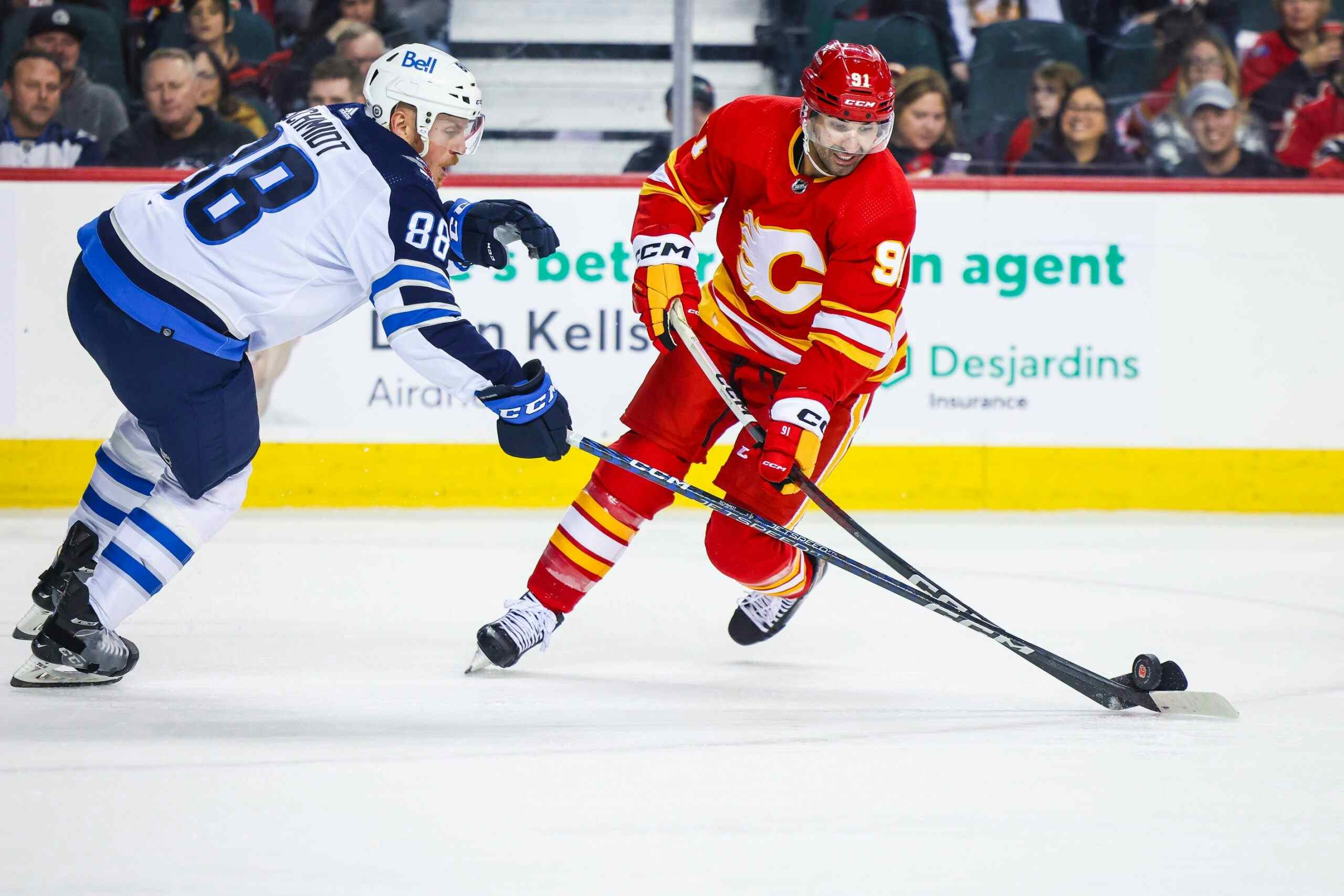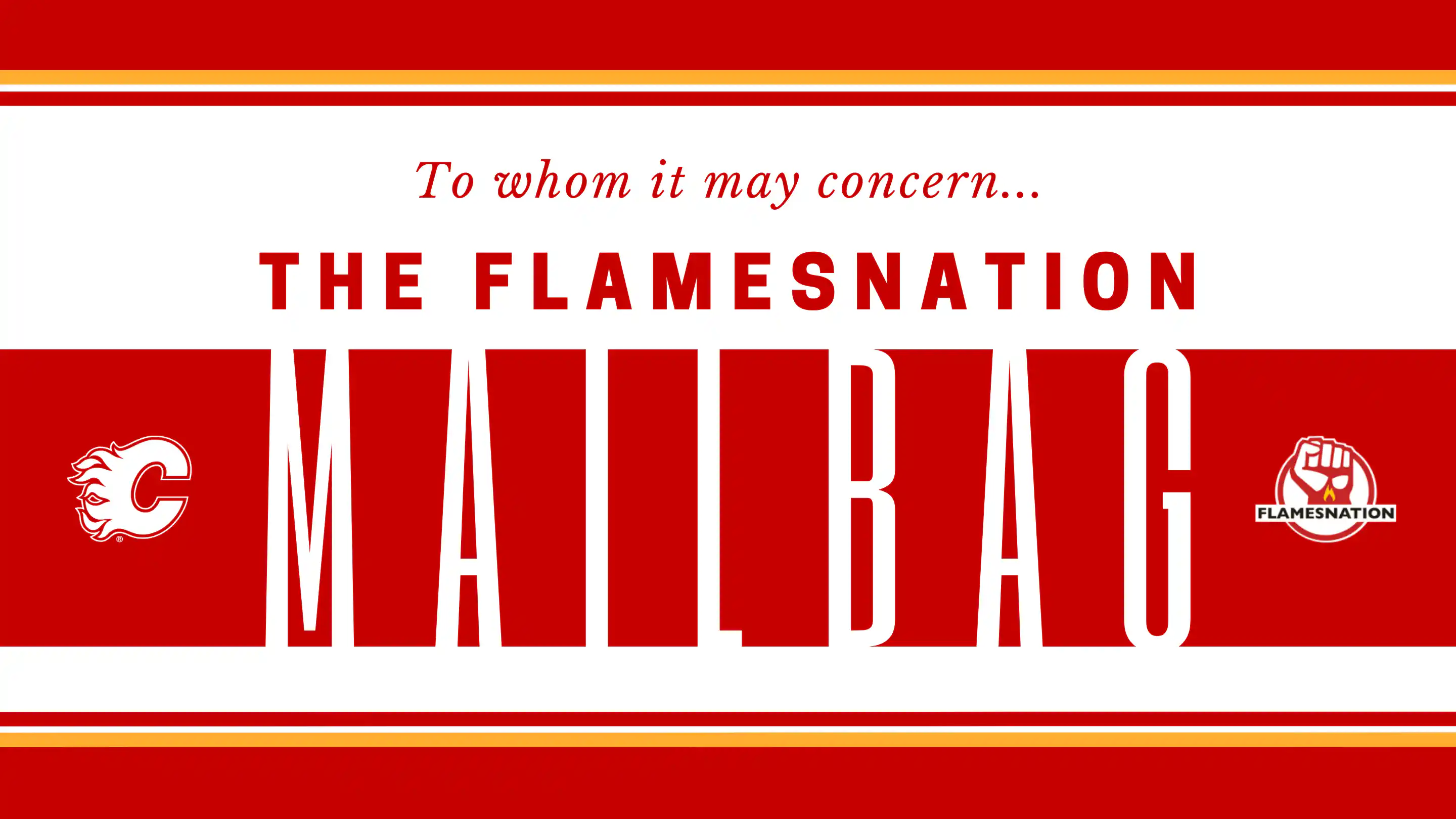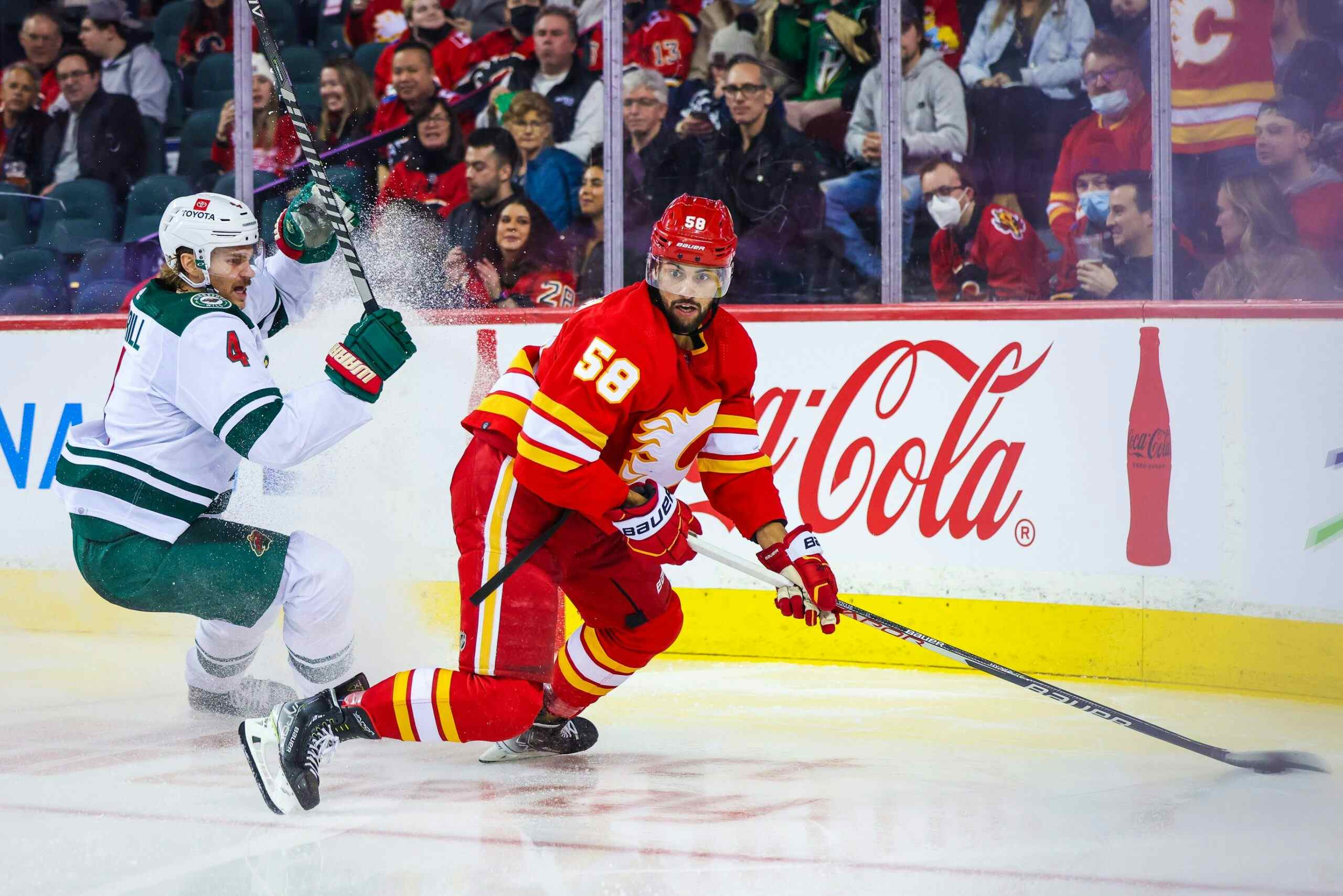Future Free Agents: The End of Johnny Gaudreau and Sean Monahan’s Entry-Level Deals
By Cam Lewis
8 years agoIt’s fantastic to have really good young players. That’s exactly what the Calgary Flames have in Johnny Gaudreau and Sean Monahan. At 22 and 21 years of age respectively, Gaudreau and Monahan sit first and second on the Flames in both goals and points, and are pillars for the organization to build their forward group around for years to come.
That being said, when you have good players, you also have to pay them as such. That’s exactly what Flames general manager Brad Trevling is going to have to do this summer, as both Gaudreau and Monahan’s entry-level contracts are set to expire on July 1. Obviously the Flames are going to look to get both of their star forwards locked up to long-term extensions this summer. But how much is it going to cost them? And how are the bricks going to fall around them?
The Flames’ Financial Situation
After unloading three soon-to-be unrestricted free agents at the trade deadline, the Flames have a decent amount of work to do in terms of putting together an NHL roster for the 2016-17 season. As of right now, they have eight forwards, seven defencemen, and zero goalies signed into next season at a combined cap hit of roughly $50 million. Those are just players currently on tear active roster, though, as the Flames have a handful of prospects on cheap, entry-level deals that could potentially fill holes on the team next season.
Dougie Hamilton, Dennis Wideman, T.J. Brodie, Mark Giordano, Deryk Engelland, Ladislav Smid, and Jyrki Jokipakka are all signed into at least next season, so the Flames don’t have much work, if any, to do on their blue line. The only pressing issue there is what to do with 2016 UFA Jakub Nakladal, who’s been impressive in his NHL debut this season. The Flames may be inclined to try to dump the contracts of Smid or Engelland, and roll forward with younger and cheaper pieces, like Nakladal, or even Tyler Wotherspoon or Brett Kulak. Regardless, there’s an abundance of options on defence moving forward in Calgary.
Goaltending was the team’s biggest issue this season, as their collection of goaltenders posted a 0.892 save percentage, which was dead last among all teams, and it’ll continue to be a major issue heading into the summer. Jonas Hiller, Karri Ramo, and Niklas Backstrom are all unrestricted free agents this summer, while Joni Ortio is set to become a restricted free agent. I’m guessing they’ll bring back Ortio, who was solid in 20 games of work this season, but certainly can’t be the team’s full-time option. I don’t think they’ll be in a rush to sign either Hiller or Backstrom, meaning they can either keep Ramo, or look for an upgrade elsewhere. There isn’t much available in terms of free agents, but the Flames could potentially explore trade as an avenue to find a long-term solution in net.
And finally, the Flames have Michael Frolik, Mikael Backlund, Sam Bennett, Matt Stajan, Lance Bouma, Brandon Bollig, Michael Ferland, and Hunter Shinkaruk signed into next season, while Gaudreau, Monahan, Joe Colbourne, and Josh Jooris need new RFA deals. They can fill some holes internally, but they’re obviously going to want to have some veterans around too.
All told, the Flames have two key RFAs in Gaudreau and Monahan, and then four forward spots, two goaltender spots, and whatever roster upgrades they’d like to make with roughly $25 million available in cap space, depending on where exactly the ceiling ends up. Let’s start with Gaudreau and Monahan and work from there.
Johnny Gaudreau
It’s no secret that Johnny Hockey is going to get paid this summer. In his first two NHL seasons, he’s broken out as one of the league’s elite producers, scoring 54 goals and 85 assists in 156 games. In fact, his 139 points puts him in 12th among all skaters in the league over that period of time, ahead of excellent offensive talents like Blake Wheeler, Claude Giroux, and Max Pacioretty.
So, yeah. He’s turning 23 in August, is about to reach the end of his entry-level deal, is already established as one of the league’s better offensive producers, and as a result, is going to command a huge contract. But how big?
Let’s start with a comparable. Conveniently, the guy who’s sitting right ahead of him on that list of top scorers over the past two seasons, Vladimir Tarasenko, also signed a massive contract recently, so we can use that as a basis. Tarasenko and Gaudreau’s production has been virtually identical since Johnny broke into the league, with Tarasenko having an edge in goal scoring and shots on goal, but Gaudreau making up for it in assists. The only real difference here is that Tarasenko is two years older than Gaudreau is, meaning he was closer to reaching UFA status when he signed an eight-year, $60 million deal with the Blues last summer.
Also very close to Gaudreau on that list is Jakub Voracek, who was rewarded with an eight-year, $66 million contract extension last summer after a breakout season with Philadelphia. Obviously this comparable doesn’t work to the same extent as Tarasenko, because Voracek was set to become a UFA, but it paints a picture of how much money that level of production is worth.
With Tarasenko (and Voracek to an extent) floating around as legitimate comparables, it’s going to be difficult for Trevling to justify offering Gaudreau anything less than $7 million.
Sean Monahan
Like with Gaudreau, we all know that Sean Monahan is going to be seeking a significant pay raise this summer. In his first three years in the league, he’s scored 80 goals and 78 assists, and at 20 years old last season, he eclipsed the 30-goal plateau, and is only three goals from reaching it again this season. When looking at how other forwards have fared in that same amount of time, Monahan ranks 11th in production among all forwards since 2005 in terms of production in the first three years of their careers.
He isn’t quite on the same level as Gaudreau is, but there’s really no questioning the fact that what Monahan has accomplished in his young career is incredibly impressive.
Unfortunately, finding a comparable for Monahan isn’t quite as easy as finding one for Gaudreau was. When looking at that aforementioned list, Monahan is right there with Nathan MacKinnon in terms of production over their first three seasons, but MacKinnon also hasn’t signed a contract beyond his entry-level deal, so that takes us back to square one.
Anyways, while they aren’t perfect, some centres who have put up similar numbers to Monahan over the first three years of their career in recent memory are: Matt Duchene, Ryan Nugent-Hopkins, and Derek Stepan. Those are the best I can pull up, unless the either party is willing to wait until MacKinnon signs a new contract.
Nugent-Hopkins is probably the best comparable of the bunch, though, as both Duchene and Stepan signed two-year bridge deals after their entry-level contracts before ultimately striking it big with $6 million and $6.5 million annual contracts down the road. After his sophomore season in Edmonton, RNH signed a seven-year, $42 million deal. Considering the fact Monahan produced at a higher clip in his first few seasons than RNH did, the former first overall pick’s $6 million annual salary is probably a good starting point for Monahan to bring to the Flames.
Conclusion
Judging by the contracts given to comparable players recently, it’s safe to say that Johnny Gaudreau and Sean Monahan are going to cost the Flames around $13 million combined moving forward. And that’s a pretty conservative estimate.
If that’s the case, and there aren’t other moves or signings made, Calgary will have $63 million invested next season into 10 forwards, seven defencemen, and zero goalies. So, depending on where the cap ceiling ends up, they would have roughly $11 million to spend on the rest of their roster, which includes two goalies, new contracts for Jakub Nakladal, Joe Colbourne, and Josh Jooris, and potential upgrades to the roster.
Obviously Monahan and Gaudreau’s new contracts are a top priority for Trevling and the Flames, but they’re going to need to find a way to free up some cap space if they want to do much in the way of improvements to their roster this summer.
Recent articles from Cam Lewis





